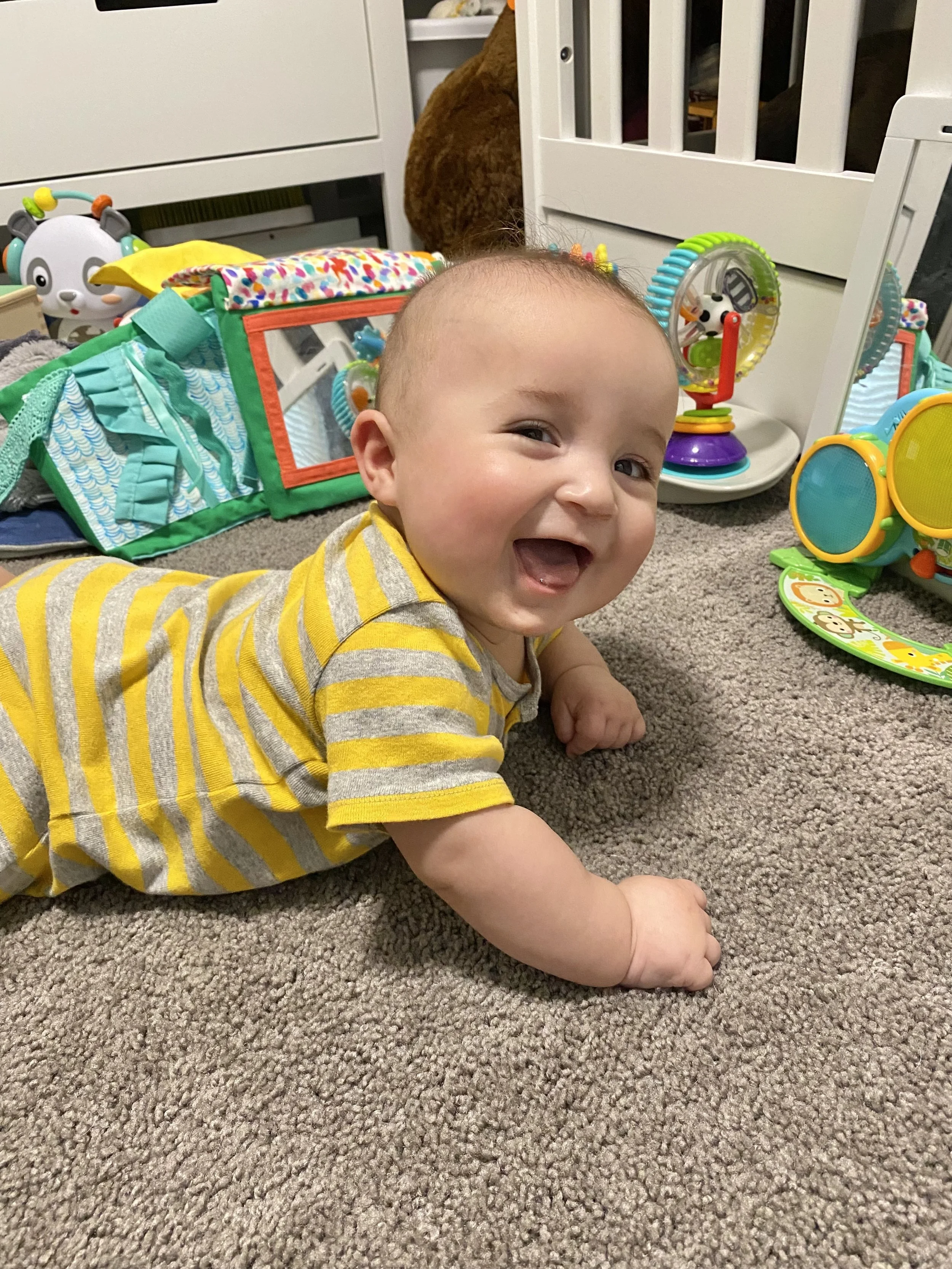Nurturing Your Baby’s Development: Positioning (Part One)
Tummy time, tummy time, tummy time. Many times as a new parent, so much focus is on how much tummy time your baby does. BUT…did you know that there are other positions that your baby can benefit from besides just tummy time? Let’s dive into each position, including pros, cons, and when your baby would most benefit from these particular positions.
Tummy Time
Let’s start with the most talked about…tummy time, also called prone. Tummy time has some amazing benefits for babies.
Pros of tummy time include 1) building strength in the neck and back muscles, 2) stretches the front of your baby’s body, 3) provides a new way to see their world, 4) builds shoulder muscles with appropriate arm placement, 5) relieve pressure on the back of the head, and 6) is a great building block to upcoming skills such as crawling.
Babies can start tummy time from day one and there are a lot of different ways to help your baby succeed on their tummy. While tummy time is a very important position, it is not the only beneficial position for babies.
Back Time
Time on your baby’s back, also called supine, is one of the more common positions to place your baby in. This position typically tolerated really well by most babies.
Pros of back time include 1) stretching the front of your baby’s body with gravity, 2) helps build strength in the front of your baby’s body, 3) allows the eyes and head to move freely without needing to control other parts of the body, 4) prepares your baby’s body for upcoming skills such as rolling and sitting, and 5) recommended position for sleep.
Similar to tummy time, back time should start on day one and is the only position recommended while your baby sleeps.
Sidelying
Sidelying is one of my favorite positions for baby’s to play in. While this position can be started from day one with support, babies will benefit from these skills even more as they grow and get stronger.
Pros of sidelying include 1) helping to balance the back and front muscles of baby’s body, 2) helping to reshape the head if asymmetries are present, 3) provides a new way to see the world (stimulates the vestibular system), 4) prepares baby for skills such as rolling, 5) helps your baby practice reaching to their midline and across their midline more easily, and 6) helps build strength in the sides of your baby’s body.
By the age of 4 months, your baby should be able to play on their side comfortably with good balance between their back muscles and front muscles.
With all of these positions, consequences can occur if one position is used too frequently. Too much of a good thing isn’t necessarily good. Trying to change positions frequently and expose your baby to a variety of positions is a great way to help your baby build an appropriate balance of skills.
How Specialized Physical Therapy Can Help
If your baby is struggling with any of the positions mentioned above, it may be helpful to seek out assistance from a specialized healthcare professional(s) to assess the specific reasons why these particular positions are more difficult and provide education to help your baby continue to progress at home. Your provider will be trained to evaluate and address the specific needs of you and your baby with targeted exercises and an individualized home program to help make these positions easier and more comfortable.
For more information on if your baby would benefit from individualized physical therapy treatment, feel free to reach out to us Here! Our team of clinicians are pediatric physical therapists and certified breastfeeding specialists, and we are here to help! Year One Wellness offers virtual consultation everywhere and in-person consultations in and around Austin, TX.




